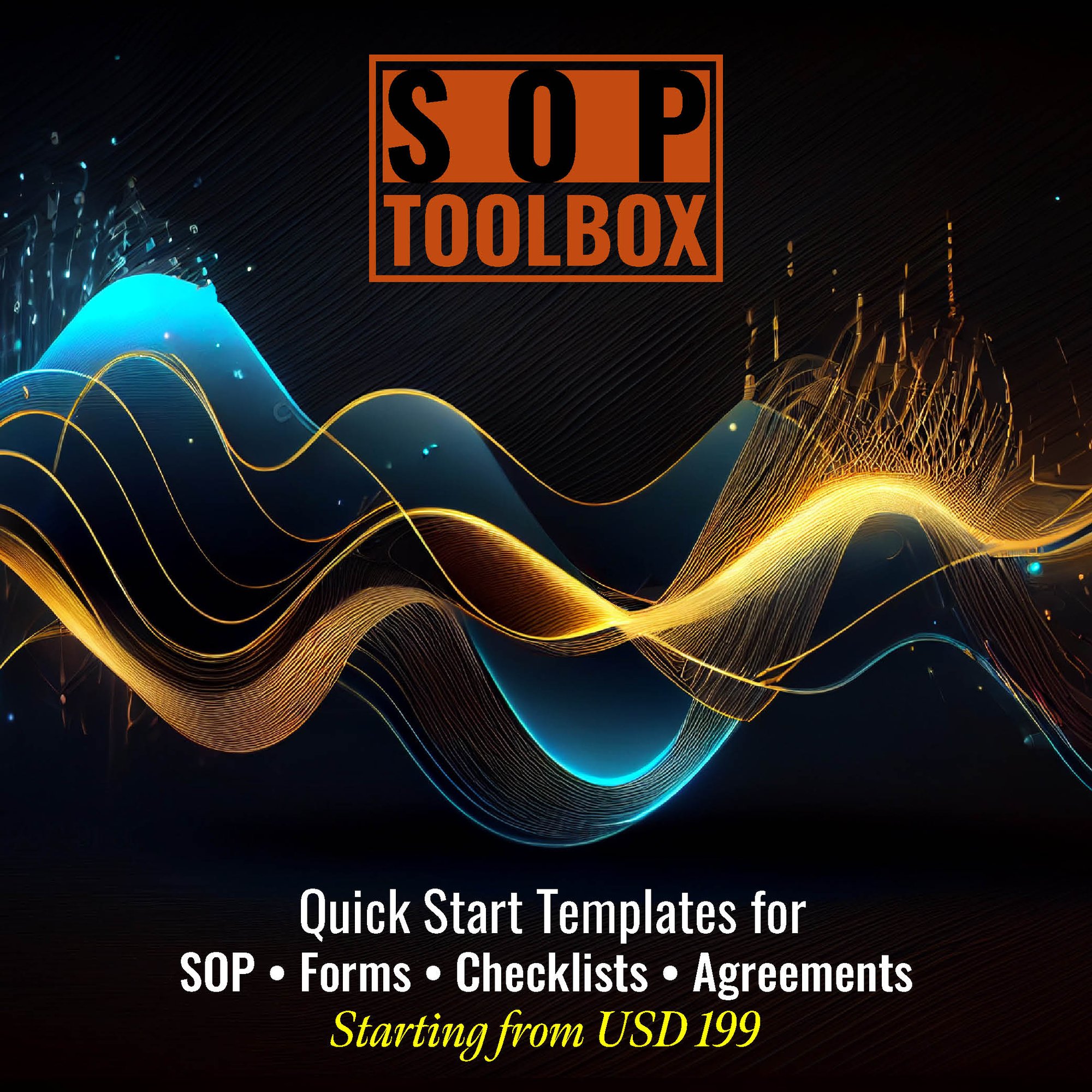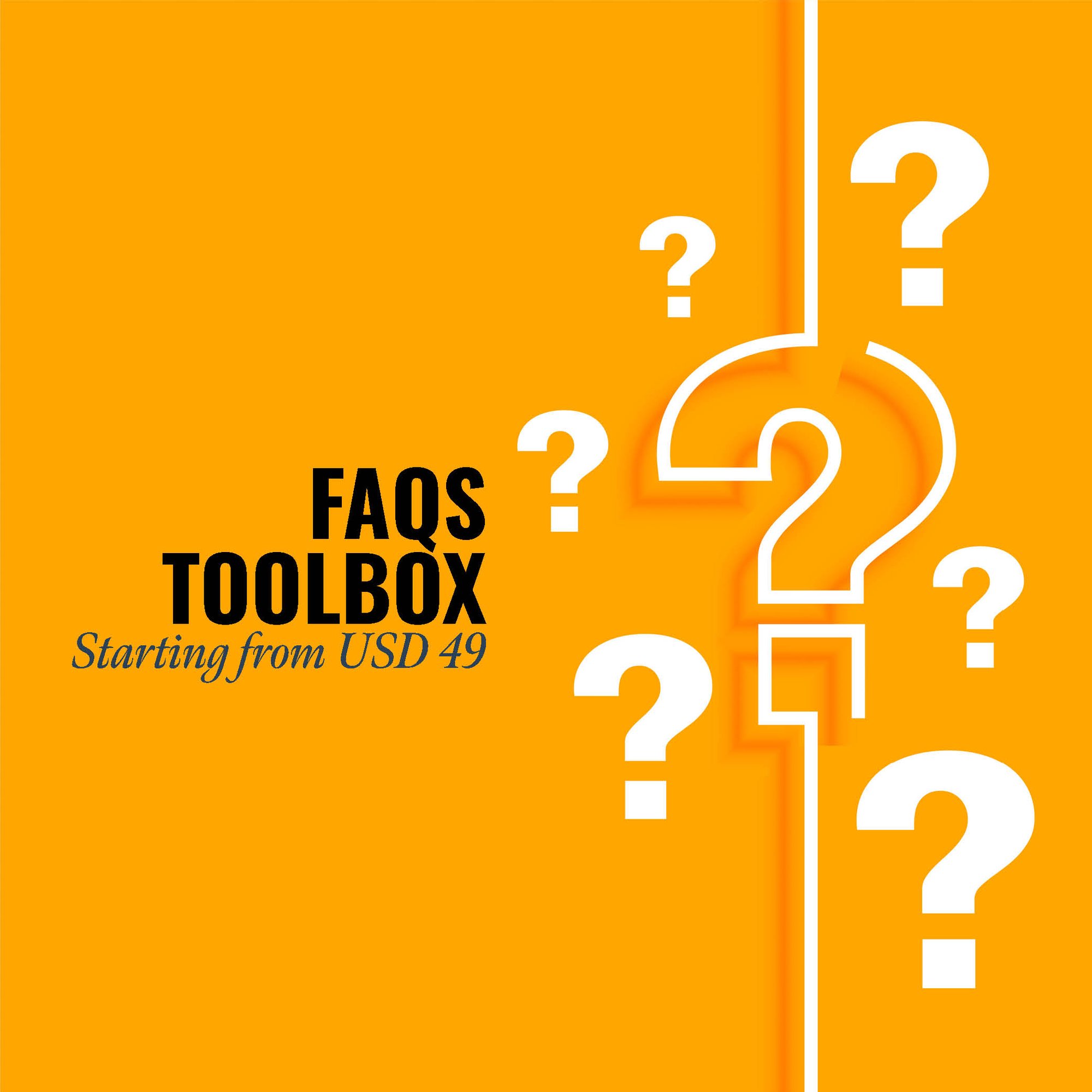An SOP (Standard Operating Procedure) Manual for Tree Nut Farming holds paramount importance in ensuring efficient, sustainable, and safe agricultural practices. Firstly, it establishes standardized procedures for planting, cultivation, harvesting, and post-harvest processes in tree nut farming. This consistency enhances overall productivity and quality control. Secondly, the manual becomes an indispensable resource for personnel training, guiding farmers and workers in adhering to best practices, reducing errors, and optimizing yield. Thirdly, it plays a crucial role in risk management by outlining safety protocols, pest control measures, and environmental considerations. Additionally, the SOP Manual contributes to regulatory compliance, addressing legal requirements and industry standards. By providing a structured framework, it supports the implementation of sustainable farming practices, ensuring the long-term viability of tree nut farming operations. Overall, the manual fosters excellence, professionalism, and environmental stewardship in the tree nut farming industry.
CLICK HERE to download the List of SOPs Document in PDF format. Please share this document with your clients, colleagues and senior officers.
Top 50 Standard Operating Procedures (SOPs) for Tree Nut Farming
SOP-032-001: Standard Operating Procedure for soil preparation
SOP-032-002: Standard Operating Procedure for site selection
SOP-032-003: Standard Operating Procedure for variety selection
SOP-032-004: Standard Operating Procedure for planting procedures
SOP-032-005: Standard Operating Procedure for water management
SOP-032-006: Standard Operating Procedure for fertilization
SOP-032-007: Standard Operating Procedure for pruning techniques
SOP-032-008: Standard Operating Procedure for pest management
SOP-032-009: Standard Operating Procedure for disease management
SOP-032-010: Standard Operating Procedure for harvesting practices

SOP-032-011: Standard Operating Procedure for post-harvest handling
SOP-032-012: Standard Operating Procedure for quality control
SOP-032-013: Standard Operating Procedure for equipment maintenance
SOP-032-014: Standard Operating Procedure for record keeping
SOP-032-015: Standard Operating Procedure for safety protocols
SOP-032-016: Standard Operating Procedure for training procedures
SOP-032-017: Standard Operating Procedure for environmental stewardship
SOP-032-018: Standard Operating Procedure for Weed Control
SOP-032-019: Standard Operating Procedure for Equipment Purchasing Guidelines
SOP-032-020: Standard Operating Procedure for Pollination Management
SOP-032-021: Standard Operating Procedure for Frost Protection
SOP-032-022: Standard Operating Procedure for Cover Crop Management
SOP-032-023: Standard Operating Procedure for Market Preparation
SOP-032-024: Standard Operating Procedure for Government Regulations
SOP-032-025: Standard Operating Procedure for Community Relations
SOP-032-026: Standard Operating Procedure for Drip Irrigation Maintenance
SOP-032-027: Standard Operating Procedure for budgeting and financial management
SOP-032-028: Standard Operating Procedure for drought preparedness
SOP-032-029: Standard Operating Procedure for temperature and humidity monitoring
SOP-032-030: Standard Operating Procedure for integrated nutrient management

SOP-032-031: Standard Operating Procedure for data security and privacy
SOP-032-032: Standard Operating Procedure for grafting techniques
SOP-032-033: Standard Operating Procedure for propagation practices
SOP-032-034: Standard Operating Procedure for dealing with wildlife
SOP-032-035: Standard Operating Procedure for sunburn prevention
SOP-032-036: Standard Operating Procedure for chemical application safety
SOP-032-037: Standard Operating Procedure for post-harvest measures
SOP-032-038: Standard Operating Procedure for phytosanitary measures
SOP-032-039: Standard Operating Procedure for erosion control
SOP-032-040: Standard Operating Procedure for cultivation of companion plants
SOP-032-042: Standard Operating Procedure for stump removal procedures
SOP-032-043: Standard Operating Procedure for mulching guidelines
SOP-032-044: Standard Operating Procedure for thinning practices
SOP-032-045: Standard Operating Procedure for quality assurance
SOP-032-046: Standard Operating Procedure for employee health and safety
SOP-032-047: Standard Operating Procedure for microclimate management
SOP-032-048: Standard Operating Procedure for biosecurity measures
SOP-032-049: Standard Operating Procedure for equipment disposal
SOP-032-050: Standard Operating Procedure for community outreach
SOP ToolBox: If you are reading these lines, I am sure you are looking for Standard Operating Procedure guidelines or SOPs itself. In both the cases, searching in internet will not be yielding any great help. Because no company shares their SOP Development Process and certainly don’t share their SOP Documents. The best way to develop an SOP is creating one for yourself. At Fhyzics, we write SOPs day-in and day-out for companies across the globe including some of the Fortune 500 organisations. Our charge ranges from USD 5000 to USD 50000 depending upon the number of processes to be covered. Certainly, this is not affordable to small and mid-size organisations. Hence, we decided to create this SOP ToolBox to disseminate our 8-Step SOP Development Life-Cycle and best practices at an unbelievably low price.
I always say, writing an SOP is somewhere between art and science. So far you may be clueless on where to start and how to progress on an SOP? This will not be the case after you diligently go through this SOP ToolBox. We have summarised all our secrets here to get you started and to deliver a stunning SOP to your management.
1. Standard Operating Procedures (SOP) Manual for Accounts Department
2. Standard Operating Procedures (SOP) Manual for Finance Department
3. Standard Operating Procedures (SOP) Manual for Customer Service
4. Standard Operating Procedures (SOP) Manual for CRM Department
5. Standard Operating Procedures (SOP) Manual for Credit Department
6. Standard Operating Procedures (SOP) Manual for Treasury Department
7. Standard Operating Procedures (SOP) Manual for Human Resources (HR) Department
8. Standard Operating Procedures (SOP) Manual for Training Department
9. Standard Operating Procedures (SOP) Manual for Learning & Development Department
10. Standard Operating Procedures (SOP) Manual for Administration Department
11. Standard Operating Procedures (SOP) Manual for Front Office
12. Standard Operating Procedures (SOP) Manual for House Keeping
13. Standard Operating Procedures (SOP) Manual for Safety Department
14. Standard Operating Procedures (SOP) Manual for Security Department
15. Standard Operating Procedures (SOP) Manual for Facilities Management Department
16. Standard Operating Procedures (SOP) Manual for Vigilance Department
17. Standard Operating Procedures (SOP) Manual for Legal Department
18. Standard Operating Procedures (SOP) Manual for Information Technology (IT) Department
19. Standard Operating Procedures (SOP) Manual for Sales & Marketing Department
20. Standard Operating Procedures (SOP) Manual for Design & Engineering
21. Standard Operating Procedures (SOP) Manual for Procurement Department
22. Standard Operating Procedures (SOP) Manual for Production
23. Standard Operating Procedures (SOP) Manual for SRM Department
24. Standard Operating Procedures (SOP) Manual for Supply Chain Department
25. Standard Operating Procedures (SOP) Manual for Warehouse
26. Standard Operating Procedures (SOP) Manual for New Product Development Department
27. Standard Operating Procedures (SOP) Manual for Research and Development
28. Standard Operating Procedures (SOP) Manual for Quality Department
29. Standard Operating Procedures (SOP) Manual for Calibration Department
30. Standard Operating Procedures (SOP) Manual for Maintenance Department
31. Standard Operating Procedures (SOP) Manual for Logistics Department
The Asia Pacific was the largest region in the global fruit and nut farming market, accounting for 49% of the market in 2018. Western Europe was the second largest region accounting for 13% of the global fruit and nut farming market. Eastern Europe was the smallest region in the global tree nut farming market.
-
Wonderful Orchards LLC
-
Candor-Ags Inc
-
Macfarms LLC
-
Columbia Empire Farms Inc
-
Taylor Brothers Farms Inc
-
Braden Farms
-
Munger Investments
-
Jerry Barton
-
Skittone Almond Sheller Inc
-
Panoche Creek Packing Inc
Some of the challenges faced by this industry
- Traditional Tree Nut farming methods are no longer enough for today’s farmers
To be competitive today, Tree Nut farmers need more from their land and their crop. Higher levels of production require more intensive farming, but traditional methods are very difficult to scale cost-effectively and sustainably.
Italy, although a small producer, clearly demonstrates the three models of an almond farm:
- Specialized trees, fully irrigated, spaced regularly with a consistent automation
- Specialized orchards, irregular water supply, managed manually or with semi-automation
- Low specialization, species competing, natural water supply, manual management
In order to be competitive, Tree Nut producers are increasingly adopting the first model, having identified a pressing need for both a scientific approach to planting and automated management. Automated processes are more reliable than workers for repetitive tasks. Once the technology is set up, it can also significantly reduce management costs.
In Spain, farmers are both extending their orchards by replacing wheat and sunflower fields with almond trees in a very organized way and finding new uses for the technology. Their ‘shaker’ machines, for example, usually used to harvest olives, are now being used to harvest almonds as well.
Spanish farmers are also looking at different varieties of Tree Nut that could potentially deliver a greater yield. However, there may be implications with these varieties, such as the amount of water required to grow them, which also has to be taken into account.
- The impact of drought on almond crops and irrigation solutions
California, the world’s Tree Nut growing capital, is suffering record-breaking wildfires and droughts. Limited to underground aquifers shared between commercial enterprises and residents, California leads the way with efficient irrigation. This has led to them developing cutting edge irrigation solutions that other countries are also learning from.
87 percent of Californian farmers use micro-irrigation – where water is delivered directly to tree roots – and demand-based irrigation scheduling. Improvements such as these have reduced the amount of water to grow 1lb of Tree Nut by 33 percent over the past 20 years.
Drought is a problem in Spain too, with local water boards limiting the amount of water each farmer can use per hectare of land. If reservoir levels deplete, it will become imperative for Spanish farmers to address other forms of irrigation, perhaps widely adopting the Californian model.
- Issues with manual labor leading advances in automated solutions
Labor is more expensive and less reliable than ever. Employment trends are changing across the world and, as developing economies emerge, manual labor becomes scarcer. Farming is losing out to more lucrative, less physical roles in other sectors. This leaves farmers suffering from a dwindling workforce, traditionally charged with quality inspection and rework: both essential in ensuring quality and yield.
This issue has driven the need for better automated processes and Tree Nut producers are seeing an upsurge in profits as a result. Certain Spanish Tree Nut producers, for instance, are using reverse sorting technology to save kilos of almonds every day from the waste pile. One producer has reported a saving of 500 kilos daily, equating to €2,500 per day.
Automated grading processes significantly improve consistency of quality. Human inspectors can be subjective when it comes to grading, whereas automated grading is completely objective.
- Quality control standards rise as nut quality degrades
Despite the best efforts of Tree Nut producers to increase supply, demand continues to gallop ahead at a faster rate. Climate issues and other natural threats degrade the overall quality of the crop. Add to this increased quality control at the point of import and the strains on manufacturers are obvious. While demand soars, the need for ensuring a top quality products is not only in response to certain markets’ preference for a premium product, it’s also a public health issue.
Pathogens such as aflatoxin, salmonella, and e-coli are a serious concern, reflected in the high rate of nut batch rejections in Europe. To combat dangers such as these, the Global Food Safety Initiative (GFSI) actively supports the continuous improvement of food safety for consumers worldwide.
GFSI is a business-drive initiative that provides a platform for collaboration between some of the world’s leading food safety experts from retailer, manufacturer and food service companies, service providers associated with the food supply chain, international organizations, academia, and government. Collaboration on this scale is helping drive the development of increasingly sophisticated technologies to detect all sorts of defects, from shell damage to serious contaminations that could impact public health. Good news for consumers and almond producers alike.
- Global trade pressures on Tree Nut exporters and how they respond
Finally, there are market pressures that Tree Nut producers can’t control. In 2018, US farmers saw the price of their crop drop 14 percent between March and July. Chinese and Indian buyers shunned Californian Tree Nut, turning instead to Australian producers, in retaliation to rising import tariffs as a result of Trump’s trade war with China.
2018 was a bumper year for California’s almond growers, many of whom were expecting to export to the lucrative Chinese market, a market the US almond industry has been developing for 15 years. It remains to be seen how this particular challenge will be overcome.
While global politics can provide the toughest challenges for businesses, technology has the answers to many issues. As the almond market shifts and challenges evolve, technology is offering more ways to improve efficiency, maintain uptime, and increase yield.
- Central California Almond Growers Association
https://ccaga.com/ - American Walnut Manufacturers Association
https://www.walnutassociation.org/
The tree nuts farming industry consists of a wide array of crops and products generating, on average, over $25 billion in farm cash receipts annually. Produced on less than 2 percent of U.S. agricultural cropland, farm cash receipts from this sector account for about 7 percent of the total receipts for all agricultural commodities and around 13 percent for all crops. Foreign markets serve as outlets for less than 20 percent of overall U.S. fruit and tree nuts supplies, while nearly half of the available supplies for domestic consumption come from imports.
Research By : Mohammed Ijas
Please click here to review the SOP Templates’ Terms & Conditions.
Keywords: sop, manual, policy, sop meaning, sop full form, standard operating procedure, full sop, user manual, sop is, user guide, instruction manual, owners manual, sample sop, operators manual, sop example,standard operating procedure examples, abbreviation sop, standard operating procedure sample, milk sop, sop document, sop process,m manual, operating procedures, operating process, sop meaning in hindi, standard procedure, sop standard operating procedure, sop top, sop writing, standard operating procedures manual, sop meaning in english, sample sop for mba, standard operating procedures examples in office, product manual, sample sop for ms, maintenance manual, sop security, sop in research, sop in business, whats sop, standard of operation, sop set, sop procedure, sop marketing,sop training, sop hotel, sop, sop meaning business, sop form, sba sop,sop software, help manual, sop it, army sop, company sop, sop sap, o m manual, standard operating procedure examples for small business, shop manual, sop manual, sop meaning in business, purpose of standard operating procedures, sop full meaning, standard operating procedure meaning, sop military, sop standard, sop meaning medical, hr sop, sop production, purpose of sop, sop management, warehouse sop, sales sop, sop pharma, sop manufacturing, sop creation, sop laboratory, ms sop, sop full form in hindi, sop front office, sop customer service, sop online, gmp sop, sop purchasing, sop pharmacy, sop safety, sop for project management,sample sop for australian student visa, sop meaning in tamil, sop system, best sop, sop up, sop in english, sop for mechanical engineering, sop for university,sop in malay, sop lab, sop for business analytics, sop model, sop in pharmacy, developing sops, standard operating procedure examples manufacturing, sop full form in retail,sop full form in medical, sop engineering, sop application, writing standard operating procedures, procurement sop, sop maintenance,standard operating procedure nhs, sop clinical trial, sop operations,sop in construction, operating procedures manual, standard operating procedure ppt, standard procedure meaning, sop ppt, a sop, sop document meaning, sop def, sop full form in safety, sop quality control, sop for college, sop quality, sop service, types of sop, sop for engineering management, sop document sample, benefit of sop, preparing sop, standard operating procedure in hindi, sop for visa, sop compliance, sop protocol, sop aviation, sop meaning in chat, standard operating process, sop meaning military, sop for business management, standard operating procedure software, sop list, sop medical, sop logistics, sop project, sop for it department, sop call center, standard work procedures, sba sop 50 10, sop meaning in logistics, standard operating procedure laboratory, test sop, sop sample for ms, drafting sop, sops meaning in tamil, sops meaning in telugu, sop automotive, standard operating system, sop cafe, sop slideshare, sop ap, sop bank, sop in retail, creating standard operating procedures, sop admin, document control sop, pharmaceutical sop,sop in pharmaceutical industry, statement of purpose harvard, sop examples for ms, quality assurance sop, sop in clinical research, nursing sop, sop for transportation, sop policies, sops are specific to a process, sop in hindi, standard operating procedure for warehouse picking, master sop, list of sop for pharma, pharmaceutical sop examples, types of standard operating procedures, retail sop, sample sop for ms in mechanical engineering, standard operating protocol,sop supply chain, system operating procedure, sop rules, example of sop in research, sop in food industry, sop for international business management, sop for hospitality management, sop for hr department, army sop example, sop standard operating, office sop, hr standard operating procedures, preventive maintenance sop, sop for purchase department, human resources sop, fire department sops, information technology sop, operating procedure example, administration sop,sop for retail store, indian sop, construction management sop, sop hotel front office, example sop document, standard and procedures,working sop, sop for maintenance department, sop hrd department,sop full form in hotel industry, sop full, sop for human resource management, laboratory sop examples, standard operating procedure for quality control, sop for ms in mechanical engineering, sop meaning army, security standard operating procedures, sop machine, sample sop for internship, sop for hotel management, sample sop for masters, qa sop, developing standard operating procedures, standard operating procedure document, product recall sop, marketing statement of purpose, it standard operating procedures, equipment sop, sop purpose example, sop shipping, sop for sales and marketing,converting pos to sop, workshop sop, standard operating procedure manufacturing, digital marketing standard operating procedures, following standard operating procedures, sop ki full form, sop for nursing procedures, an sop, purchase sop for manufacturing company, sop a, statement of purpose for mba marketing, full meaning of sop, sop for research internship, research sop sample,vendor qualification sop, sop purchasing and receiving, sop meaning in visa, sop for admission, standard operating procedure medical office, sop in industry, sop sales marketing, navy sop, project management standard operating procedures, sop it support, standard operating manual, security operating procedures, statement of purpose for international business, procurement standard operating procedures, communication sop, sop full form in pharma, minimum sop, sop health and safety, product sop, sop for marketing department, sop in medical terms, sales standard operating procedure, sop purchase order, department sop, customer service standard operating procedures, clinical sop, marketing standard operating procedure, sop standard operating procedure example, construction standard operating procedures, standard of operations procedures manual sample, sop for facility management, sop full form in education, standard operating procedure in food industry, visa sop,sop for business administration, company sop meaning, sop work, sop operating procedure, sop for summer internship in engineering sample, general administration sop, sop for administrative duties.
Our SOP Templates’ clients are from the following States and Countries:
Alabama, Alaska, Arizona, Arkansas, California, Colorado, Connecticut, Delaware, Florida, Georgia, Hawaii, Idaho, Illinois, Indiana, Iowa, Kansas, Kentucky, Louisiana, Maine, Maryland, Massachusetts, Michigan, Minnesota, Mississippi, Missouri, Montana, Nebraska, Nevada, New Hampshire, New Jersey, New Mexico, New York, North Carolina, North Dakota, Ohio, Oklahoma, Oregon, Pennsylvania, Rhode Island, South Carolina, South Dakota, Tennessee, Texas, Utah, Vermont, Virginia, Washington, West Virginia, Wisconsin, Wyoming.
Afghanistan, Albania, Algeria, Andorra, Angola, Antigua and Barbuda, Argentina, Armenia, Australia, Austria, Azerbaijan, Bahamas, Bahrain, Bangladesh, Barbados, Belarus, Belgium, Belize, Benin, Bhutan, Bolivia, Bosnia and Herzegovina, Botswana, Brazil, Brunei Darussalam, Bulgaria, Burkina Faso, Burundi, Cabo Verde, Cambodia, Cameroon, Canada, Central African Republic, Chad, Chile, China, Colombia, Comoros, Congo (Republic of the), Costa Rica, Croatia, Cuba, Cyprus, Czech Republic (Czechia), Democratic People’s Republic of Korea (North Korea), Democratic Republic of the Congo, Denmark, Djibouti, Dominica, Dominican Republic, Ecuador, Egypt, El Salvador, Equatorial Guinea, Eritrea, Estonia, Eswatini, Ethiopia, Fiji, Finland, France, Gabon, Gambia, Georgia, Germany, Ghana, Greece, Grenada, Guatemala, Guinea, Guinea-Bissau, Guyana, Haiti, Honduras, Hungary, Iceland, India, Indonesia, Iran, Iraq, Ireland, Israel, Italy, Jamaica, Japan, Jordan, Kazakhstan,Kenya, Kiribati, Kuwait, Kyrgyzstan, Lao People’s Democratic Republic (Laos), Latvia, Lebanon, Lesotho, Liberia, Libya, Liechtenstein, Lithuania, Luxembourg, Madagascar, Malawi, Malaysia, Maldives, Mali, Malta, Marshall Islands, Mauritania, Mauritius, Mexico, Micronesia (Federated States of), Moldova, Monaco, Mongolia, Montenegro, Morocco, Mozambique, Myanmar (Burma), Namibia, Nauru, Nepal, Netherlands, New Zealand, Nicaragua, Niger, Nigeria, North Macedonia (formerly Macedonia), Norway, Oman, Pakistan, Palau, Panama, Papua New Guinea, Paraguay, Peru, Philippines, Poland, Portugal, Qatar, Republic of Korea (South Korea), Republic of the Congo, Romania, Russian Federation (Russia), Rwanda, Saint Kitts and Nevis, Saint Lucia, Saint Vincent and the Grenadines, Samoa, San Marino, Sao Tome and Principe, Saudi Arabia, Senegal, Serbia, Seychelles, Sierra Leone, Singapore, Slovakia, Slovenia, Solomon Islands, Somalia, South Africa, South Sudan, Spain, Sri Lanka, Sudan, Suriname, Sweden, Switzerland, Syrian Arab Republic (Syria), Tajikistan, Thailand, Timor-Leste, Togo, Tonga, Trinidad and Tobago, Tunisia, Turkey, Turkmenistan, Tuvalu, Uganda, Ukraine, United Arab Emirates, United Kingdom of Great Britain and Northern Ireland, United Republic of Tanzania, United States of America, Uruguay, Uzbekistan, Vanuatu, Venezuela, Viet Nam, Yemen, Zambia, Zimbabwe.
Fhyzics supports organisations in developing the following documentations:
Standard Operating Procedures (SOPs), Work Instructions, Policies and Procedures, Process Flow Diagrams, Job Descriptions, Training Manuals, Employee Handbooks, Compliance Guidelines, Quality Assurance Manuals, Health and Safety Procedures, Risk Management Plans, Business Continuity Plans, Internal Audit Procedures, Incident Reporting Forms, Performance Management Guidelines, Change Management Procedures, Vendor Management Guidelines, Customer Service Protocols, IT Security Policies, IT Support Documentation, Disaster Recovery Plans, Operational Checklists, Data Management Policies, Confidentiality Agreements, Non-Disclosure Agreements, Employee Onboarding Procedures, Employee Exit Procedures, Performance Appraisal Forms, Employee Code of Conduct, Conflict Resolution Procedures, Product Development SOPs, Supply Chain Management Guidelines, Procurement Guidelines, Inventory Management SOPs, Shipping and Receiving Procedures, Production Scheduling SOPs, Maintenance Procedures, Equipment Calibration Documents, Environmental Compliance Documentation, Sustainability Policies, Customer Feedback Forms, Marketing Strategies, Advertising Guidelines, Brand Management Guidelines, Product Packaging SOPs, Laboratory Testing Procedures, Regulatory Compliance Documentation, Tax and Accounting Procedures, Contract Management Procedures, Legal Compliance Guidelines, Financial Reporting Procedures, Budgeting Procedures, Internal Control Procedures, Fraud Prevention Policies, Asset Management Guidelines, Purchase Order Procedures, Sales and Distribution Guidelines, Client Contracts, Customer Return Policies, Internal Communication Protocols, Vendor Evaluation Forms, Product Safety Standards, Workplace Health and Safety Standards, Public Relations Procedures, Social Media Management Guidelines, Crisis Management Plans, Employee Grievance Procedures, Privacy and Data Protection Policies, Digital Transformation Guidelines, Innovation Management Procedures, Continuous Improvement Guidelines, Strategic Planning Documents, Corporate Social Responsibility (CSR) Guidelines, Audit Trails and Records, Employee Training and Development Records, Succession Planning Documents, Talent Acquisition Procedures, Team Collaboration Protocols, Employee Benefit Plans, Workplace Diversity Guidelines, Time and Attendance Tracking, Payroll Procedures, Employee Leave Policies, Conflict of Interest Policy, Emergency Response Procedures, Environmental Impact Assessment Procedures, Transportation and Logistics Procedures, Inventory Control Forms, Warehouse Management Guidelines, Product Lifecycle Management SOPs, Customer Satisfaction Surveys, Third-Party Risk Assessment Guidelines, Technology Adoption Policies, Software Licensing Guidelines, Security Incident Response Procedures, Supply Chain Risk Management Policies, Product Recall Procedures, Food Safety Guidelines, Employee Wellness Programs, Workplace Ergonomics Guidelines.





.jpg?width=645&height=337&name=Standard%20Operating%20Procedure%20-%20SOP%20ToolBox%20(1).jpg)











